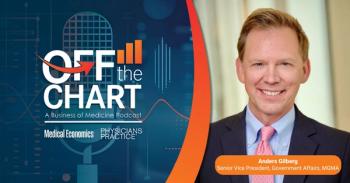
A Note From the Future
An imaginative look forward
It was 2005, the beginning of the "Great Age of Biomedicine." Yet this promise fell flat as the U.S. healthcare system seemed to have hit rock bottom. Millions of Americans could neither afford to see a doctor nor pay for medications. Physician frustration reached new highs, fueled by out-of-control medical malpractice, battles with third-party payers, and a powerlessness to control patient care.
Few would have thought the situation would improve as dramatically as it has. Later this month, on January 20, 2033, as we celebrate the inauguration of the first physician president, it's worth looking back at what brought the U.S. healthcare system, and the practice of medicine, back from the brink of disaster.
First and foremost was the full integration of technology into the practice of medicine. At the end of the 20th century, physicians were the slowest professional group to adopt information technology. It was the norm in most physician offices to write patient records and prescriptions by hand.
This began to change with the adoption of the old-fashioned electronic medical record (EMR). That trend accelerated with passage of the Health Care Technology Act in 2009. The law created tax incentives for practices that invested in technology directed at improving patient outcomes. A year later, the SuperEMR (SEMR) was released, allowing physicians to update patient records without touching a piece of equipment.
Physicians were becoming technology zealots: a 2011 NIH study reported that 98 percent used EMRs or SEMRs, documenting rising physician efficiency, declining medical errors, and a slow but increasing trend in physician incomes.
As they leveraged their growing technology knowledge, and its impact on patient care, physicians gained influence in setting healthcare policies. This led to the second major development of the last 30 years: the deregulation of the practice of medicine.
First to go: the CPT codes, following the Lake Michigan Tea Party. In 2013, a small group of physicians ceremoniously hurled their CPT software licenses into Lake Michigan in Chicago, home of the American Medical Association. (This now-defunct organization owned the CPT codes.) Within weeks a group of coders and physicians convinced the government to accept a new reimbursement plan, the Medical Access Markets Formula.
Second to change: in 2015, the president signed legislation creating broad malpractice protections while ensuring accountability for medical errors, replacing 50 years of hodgepodge solutions to malpractice. The law also made it illegal for a pharmacist to accept a handwritten prescription.
But problems remained. So in 2019 Congress passed broad universal health coverage. Two years later, however, the Supreme Court ruled that action unconstitutional, launching a national debate, culminating in passage of the 29th Amendment to the U.S. Constitution, establishing a limited market-based right to healthcare.
In 2022, following a vigorous debate on Capitol Hill, when approximately 125 million e-mails received in one day crashed the congressional computer system, the president signed legislation creating the Internet Health Savings Account Global Exchange, allowing consumers to trade healthcare benefits and outcomes in a futures market. As a result, by 2029, 98 percent of all North American-based U.S. citizens received healthcare coverage without adding to the recently-eliminated federal deficit.
The second set of developments, of course, was fed by the third major development: rising physician political power.
In 2004, there were only nine physicians in Congress. Today there are 51. In 2033 physicians are shaping healthcare policy, having learned from lawyers that the real path to power came not by working the system, but by being the system.
Despite these successes, it has taken physicians until this month to finally have one of their own in the ultimate position of power: the U.S. presidency.
Octogenarian Internet talk show host Howard Dean first gained prominence as a presidential candidate in 2004 and 2008; another physician, Bill Frist, a former Senate Majority Leader, also ran unsuccessfully for president in 2008 and 2012.
But not until this month will Vanessa Kerry, a pediatrician and former governor, become the first physician president.
Yes, much has changed since 2005.
Sign up for our free e-newsletter, "Politics and Your Practice." E-mail me at
CORRECTION: In my October 2004 column, neurosurgeon Phil Tally was misidentified as president of the American Association of
Neurological Surgeons. In fact, he was chair
of the American Neurological Surgery PAC.
I apologize for the oversight.
This article was originally published in the January 2005 issue of Physicians Practice.
Newsletter
Optimize your practice with the Physicians Practice newsletter, offering management pearls, leadership tips, and business strategies tailored for practice administrators and physicians of any specialty.









